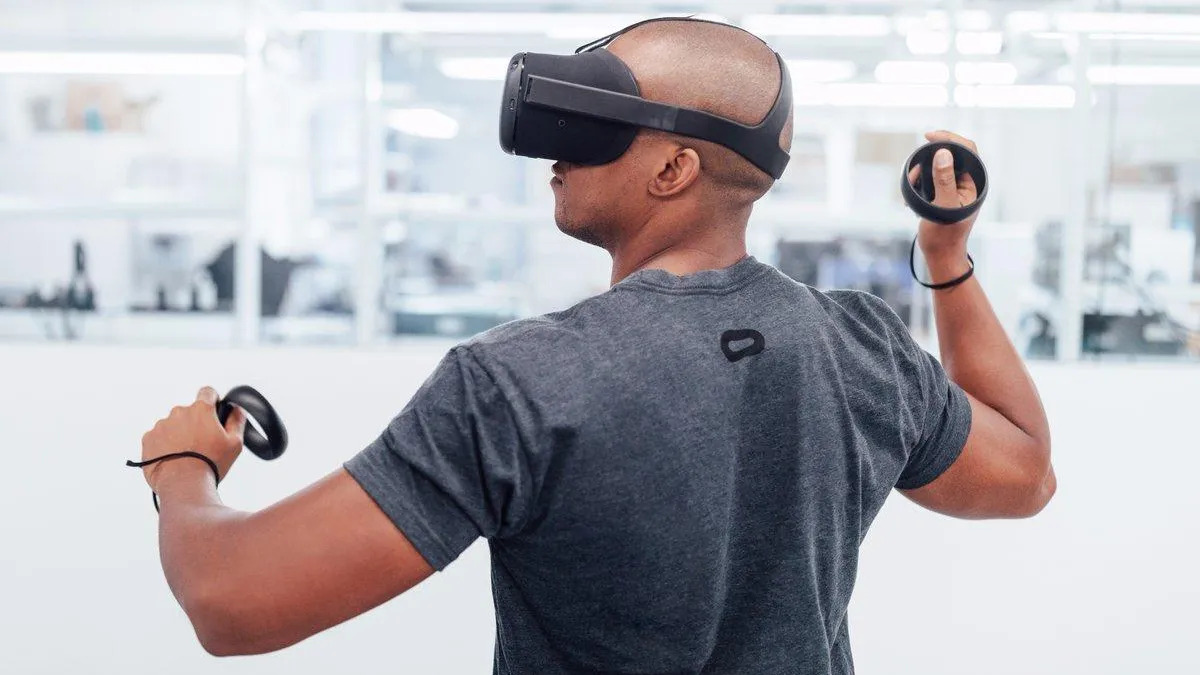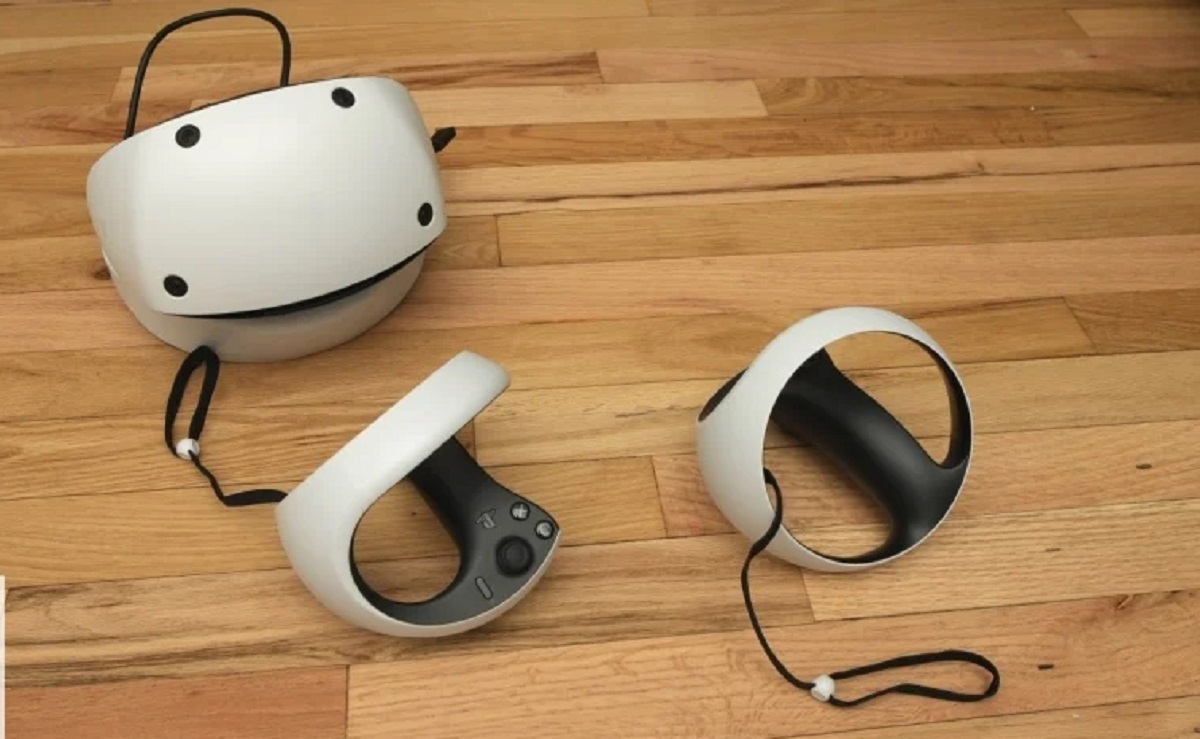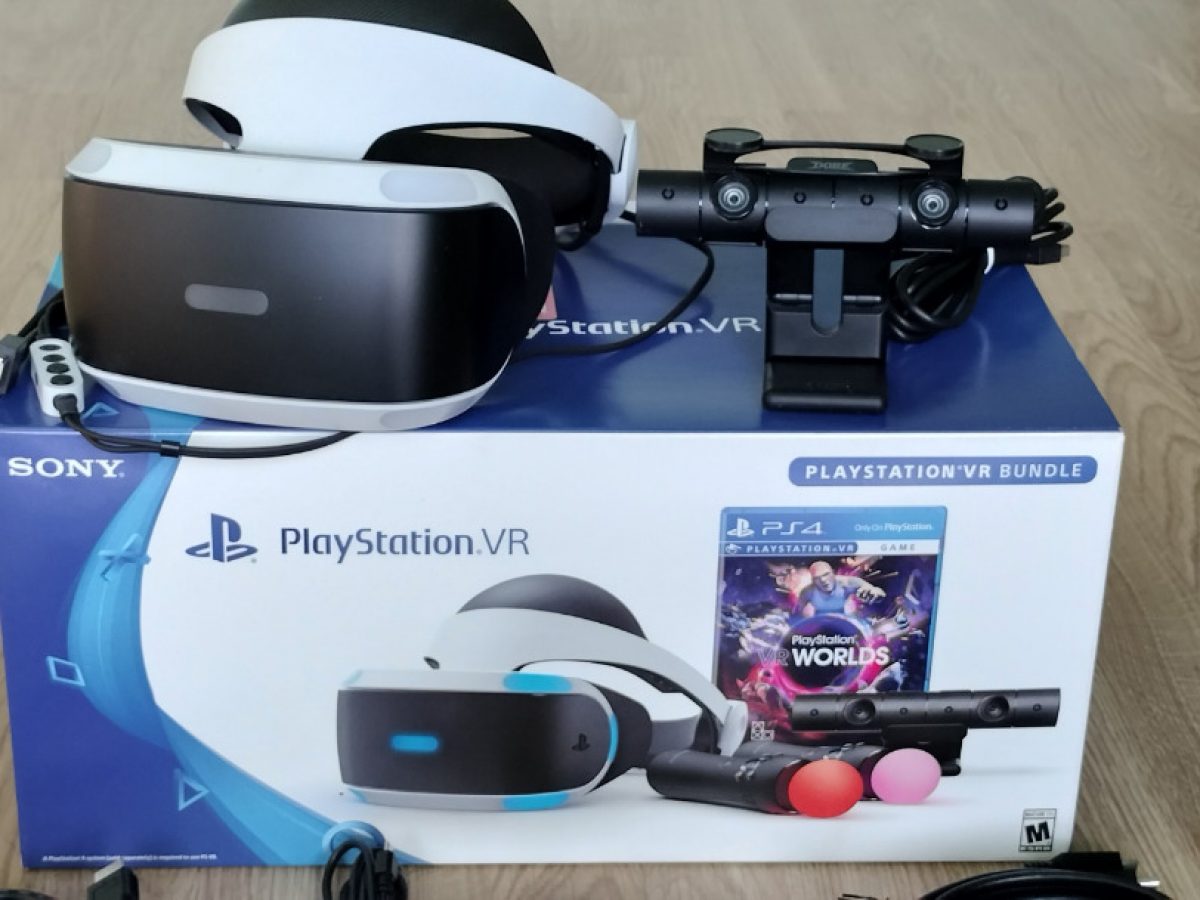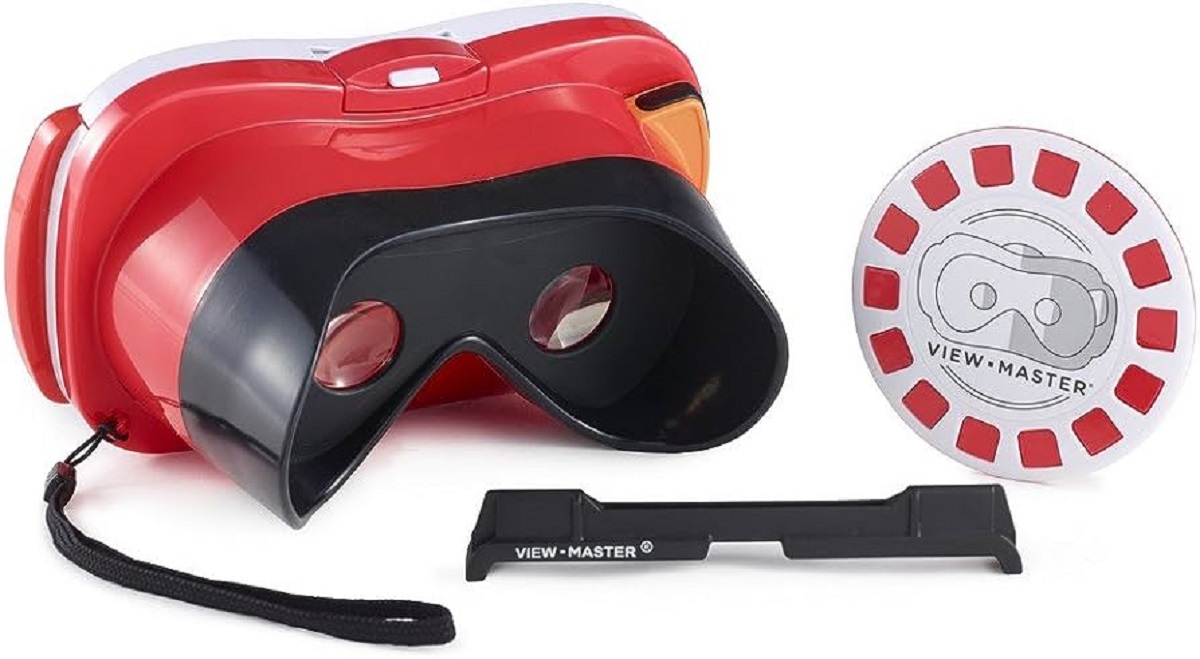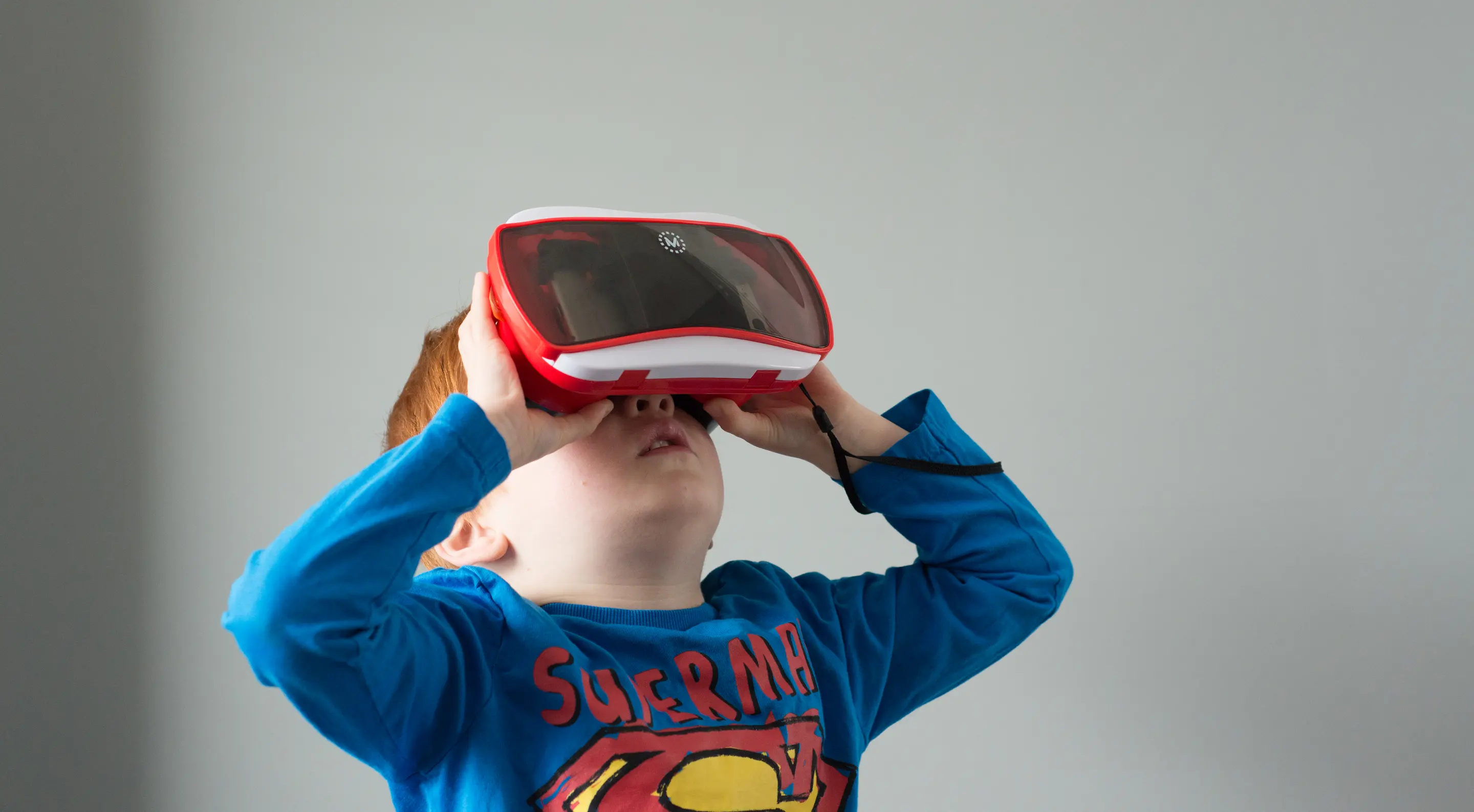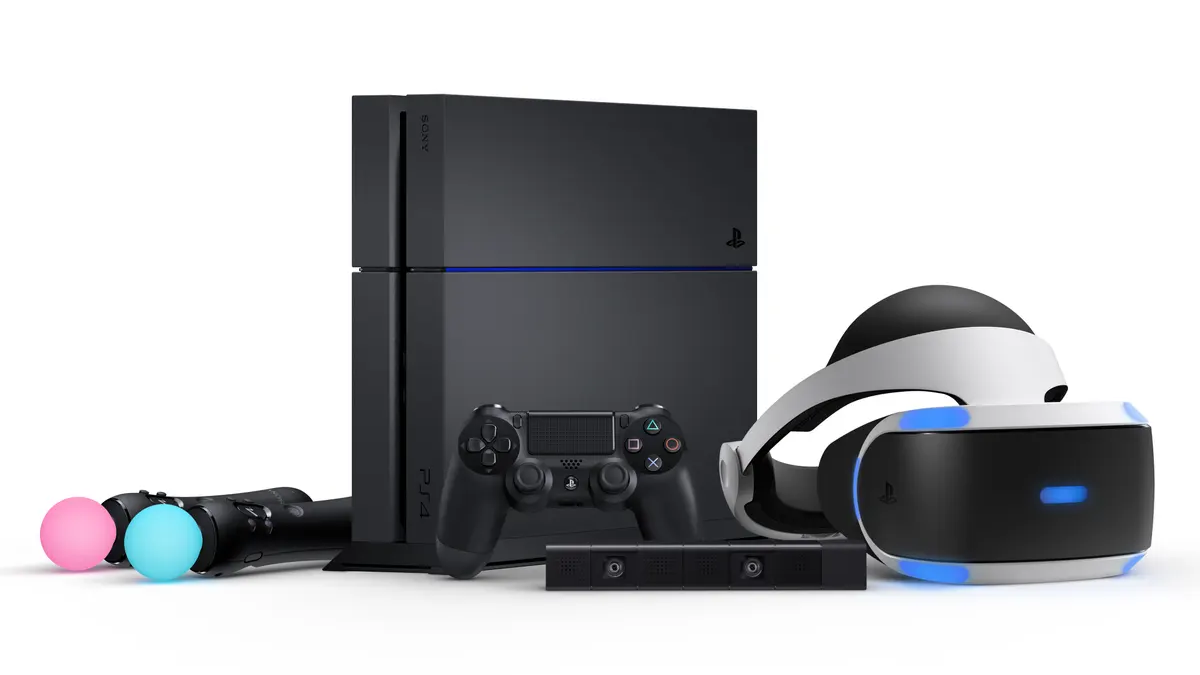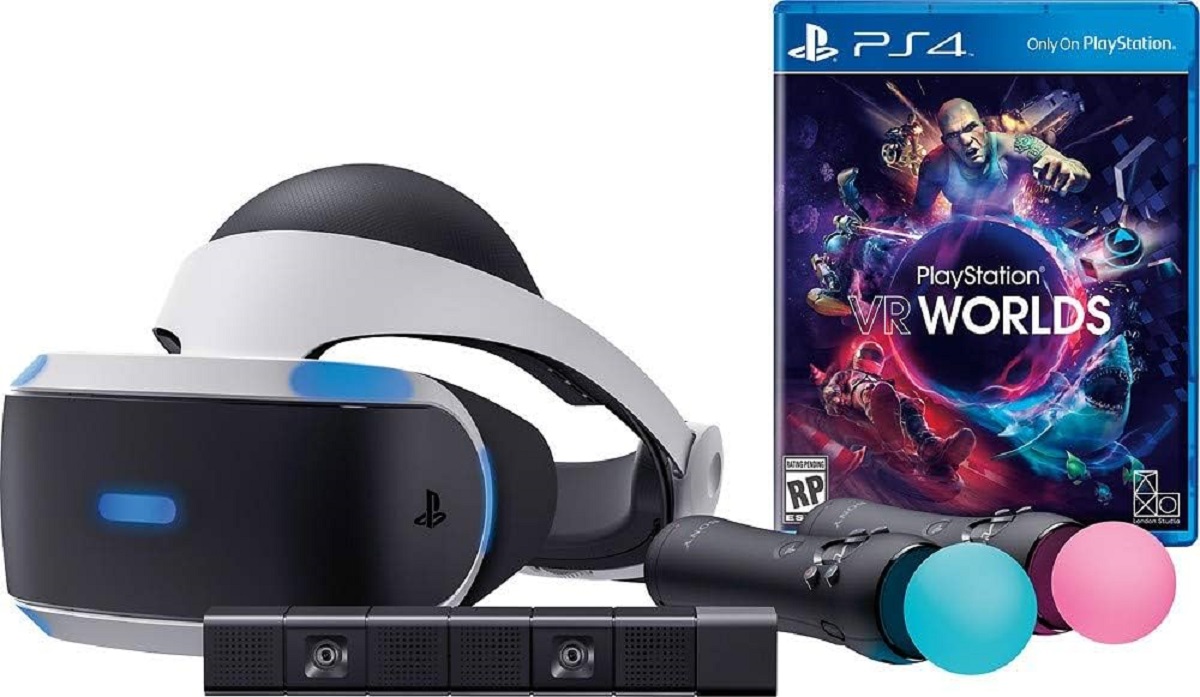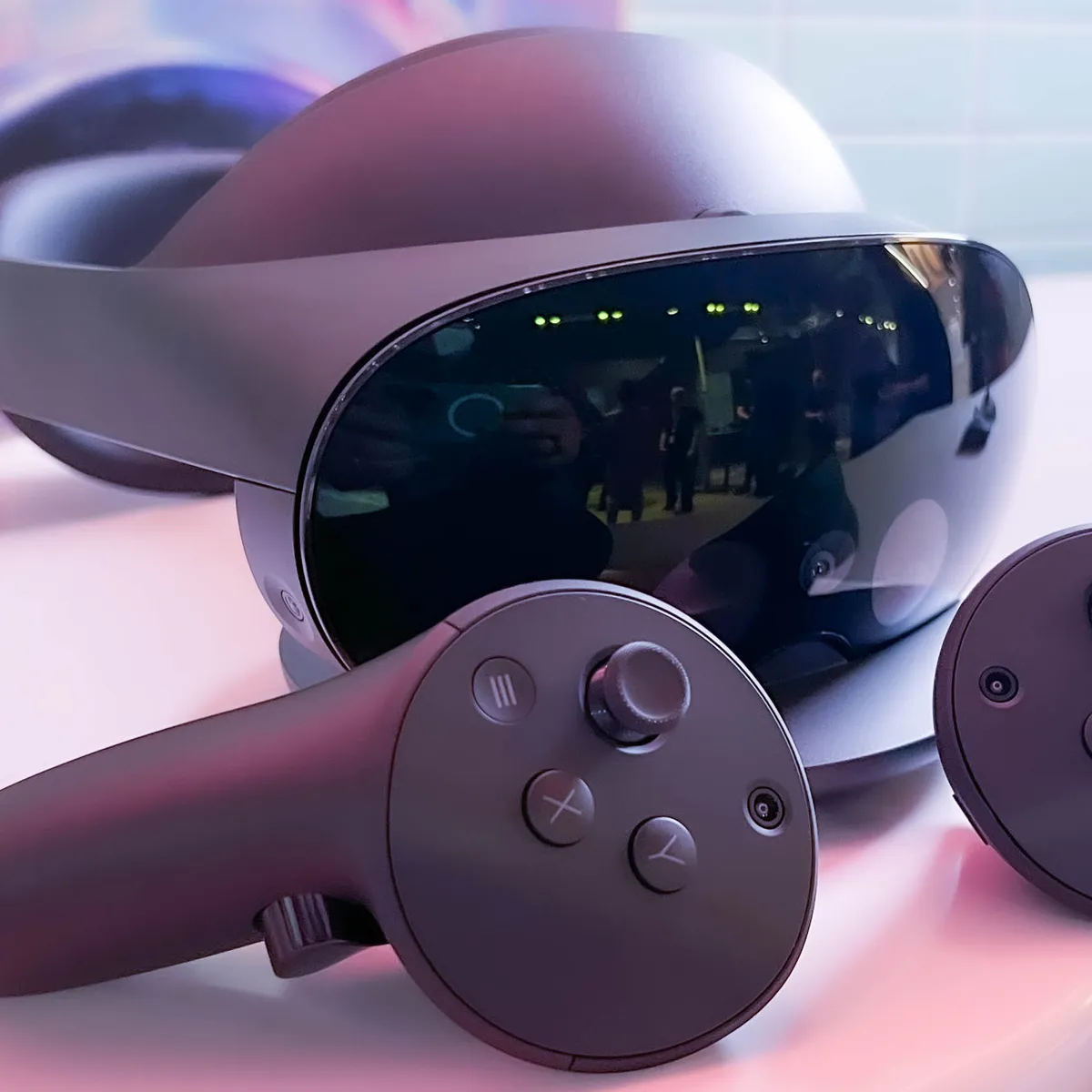Introduction
Welcome to the world of virtual reality (VR), where the boundaries between the real and the virtual are blurred. In this immersive digital realm, users can explore breathtaking environments, engage in thrilling experiences, and interact with virtual objects like never before.
Virtual reality relies on cutting-edge technology to create a sense of presence and immersion. To achieve this, various factors come into play, and one of the most critical aspects is the frame rate of the VR headset.
A virtual reality headset’s frame rate refers to the number of frames or images displayed per second. It determines the smoothness and fluidity of the visuals in the virtual environment.
Why is frame rate essential in virtual reality? Well, imagine exploring a virtual world with jerky, laggy movements. The experience would be jarring and might even lead to discomfort or motion sickness. To provide users with a seamless and natural experience, VR developers and manufacturers strive to achieve high frame rates.
Low frame rates in virtual reality can have a detrimental impact on the overall user experience. Choppy visuals can break the immersion and make it challenging to engage with the virtual environment. Moreover, low frame rates can result in motion sickness, which is a common issue among VR users.
It’s essential to understand how frame rate affects motion sickness in virtual reality. Studies have shown that higher frame rates can reduce the occurrence of motion sickness by providing smoother visuals and minimizing discrepancies between head movements and virtual reality scene updates.
Furthermore, frame rate plays a crucial role in the level of immersion experienced in virtual reality. The higher the frame rate, the more convincing and realistic the virtual world becomes. With a higher frame rate, users can explore virtual environments with a greater sense of presence, feeling as if they are truly part of the digital realm.
In this article, we will delve into the significance of frame rate in virtual reality and explore its impact on the user experience. We will also discuss the recommended frame rates for optimal VR experiences and the factors that can affect frame rate in virtual reality. By understanding these concepts, you will be better equipped to choose a virtual reality headset that delivers smooth, immersive experiences.
What is frame rate?
In the context of virtual reality, frame rate refers to the number of individual frames or images displayed per second. It is measured in frames per second (FPS). The frame rate determines how smoothly and fluidly the visuals are rendered in the virtual environment.
Every second, the VR headset displays a sequence of images to create the illusion of motion. Each image is called a frame, and the frame rate indicates how many of these frames are shown per second. A higher frame rate means more frames are displayed, resulting in smoother and more realistic movement in the virtual world.
The frame rate is directly linked to the perception of motion by our eyes. The human eye can perceive motion up to a certain threshold, commonly considered to be around 24 frames per second. However, for an immersive and comfortable virtual reality experience, a higher frame rate is required.
In traditional media, such as movies and television, the standard frame rate is 24 or 30 frames per second. This is due to various factors, including the limitations of film technology and broadcasting standards. However, in virtual reality, higher frame rates are essential to avoid visual discomfort or motion sickness.
The most common frame rates used in virtual reality are 60, 72, and 90 frames per second. These rates are significantly higher than the standard frame rates in traditional media. The reason for this is to ensure smooth movement and reduce latency between head movements and the visual response.
The frame rate is an essential parameter when it comes to the overall performance and quality of a virtual reality experience. A higher frame rate enhances the level of immersion and reduces any distractions caused by choppy or laggy visuals. It allows users to explore the virtual environment seamlessly, creating a more realistic and engaging experience.
It is also worth noting that the frame rate is closely tied to the performance capabilities of the VR hardware and the complexity of the virtual environment being rendered. More demanding VR experiences with realistic graphics and intricate details may require higher frame rates to maintain smooth gameplay and visual fidelity.
In the next sections, we will further explore why frame rate is crucial in virtual reality, its impact on the user experience, and the recommended frame rates for optimal VR immersion.
Why is frame rate important in virtual reality?
In virtual reality, frame rate plays a crucial role in creating a seamless and immersive experience for users. A high frame rate is essential for several reasons:
- Smooth and realistic visuals: A higher frame rate ensures that the visuals in the virtual environment appear smooth and fluid. This smoothness is vital to simulate natural movement and mimic real-world experiences. With a low frame rate, the visuals can appear choppy and laggy, breaking the immersion and reducing the overall quality of the VR experience.
- Reduced motion sickness: Motion sickness is a common issue in virtual reality, occurring when there is a discrepancy between the movement perceived by the user’s inner ear and the visuals displayed in the VR headset. Low frame rates can exacerbate this problem, leading to discomfort, nausea, and dizziness. By increasing the frame rate, the visual responsiveness can better match the user’s head movements, reducing the risk of motion sickness.
- Enhanced presence and immersion: The primary goal of virtual reality is to create a sense of presence, where users feel like they are truly present in the virtual environment. A higher frame rate contributes to this feeling of presence by providing a more realistic and convincing experience. The smooth visuals and responsive movements allow users to immerse themselves fully in the digital world, blurring the lines between reality and virtuality.
- Improved interaction: Virtual reality often involves interactive elements, such as grabbing objects, manipulating controls, or engaging in virtual combat. A higher frame rate ensures that these interactions are smooth and responsive, enhancing the overall gameplay experience. By minimizing delays and providing precise visual feedback, users can engage seamlessly with the virtual environment, adding a layer of realism and enjoyment to their interactions.
- Reduced eye strain: Constant exposure to low frame rates can strain the eyes and lead to fatigue. Smooth visuals at a higher frame rate reduce the strain on the eyes, allowing users to enjoy the virtual reality experience for longer periods without discomfort or fatigue.
It is important to note that achieving a high frame rate in virtual reality requires not only powerful hardware but also efficient software optimization. VR developers and manufacturers need to strike a balance between graphical fidelity and frame rate to deliver the best possible experience to users.
In the next sections, we will discuss the impact of low frame rate on the user experience in virtual reality and explore the recommended frame rates for optimal immersion and comfort.
The impact of low frame rate on the user experience
One of the significant challenges in virtual reality is maintaining a high frame rate to ensure a smooth and enjoyable user experience. When the frame rate drops below an acceptable threshold, it can have several negative impacts on the overall virtual reality experience.
First and foremost, a low frame rate can lead to a choppy and laggy visual experience. When the frame rate is insufficient, users may notice noticeable stutters and jitters as they move or look around in the virtual environment. This can break the immersion and make it difficult for users to engage with the virtual world.
Furthermore, a low frame rate can contribute to motion sickness, a common issue in virtual reality. When the frame rate is too low, there can be a significant delay between the user’s head movements and the corresponding visual update in the VR headset. This delay can cause a disconnect between what the user’s eyes perceive and what their inner ear senses, leading to nausea, dizziness, and discomfort.
In addition to motion sickness, a low frame rate can also cause general discomfort and eye strain. When the visuals appear jittery or lag behind the user’s movements, it can strain the eyes and make the virtual reality experience less enjoyable. Prolonged exposure to a low frame rate can even lead to eye fatigue, limiting the amount of time users can spend in virtual reality.
The impact of low frame rate extends beyond visual disturbances and discomfort. It can also affect the overall performance of interactive elements in virtual reality. For instance, in a game or simulation, a low frame rate can result in delayed or unresponsive controls, hindering the user’s ability to interact with the virtual environment effectively.
It is important to note that the tolerance for low frame rates can vary among individuals. Some users may be more sensitive to lower frame rates, leading to more pronounced discomfort and difficulty with immersion, while others may have higher tolerance levels.
To avoid the negative impact of low frame rates, virtual reality developers and hardware manufacturers strive to achieve higher frame rates. By maintaining a consistently high frame rate, they can provide users with smooth and responsive visuals, minimizing the risk of motion sickness and ensuring a more comfortable and immersive virtual reality experience.
In the next sections, we will explore how frame rate affects motion sickness in virtual reality and delve into the recommended frame rates for optimal immersion and user comfort.
How does frame rate affect motion sickness?
Motion sickness is a commonly reported issue among virtual reality users. It occurs when there is a disparity between the user’s physical movements and the visual feedback provided by the VR headset. Frame rate plays a significant role in mitigating motion sickness in virtual reality.
When the frame rate is low, the visual latency between the user’s head movements and the corresponding update in the VR headset becomes more apparent. This delay can create a discordance between what the user’s eyes perceive and what their inner ear senses, leading to a mismatch in sensory information and triggering motion sickness.
Higher frame rates help reduce the visual latency and improve the synchronization between the user’s physical movements and the virtual reality scene updates. With a higher frame rate, the visuals displayed in the VR headset become more responsive and closely align with the real-time head movements of the user.
Studies have shown that increasing the frame rate in virtual reality can alleviate the symptoms of motion sickness. The smoother and more fluid visuals provided by high frame rates help create a more seamless and natural experience, reducing the likelihood of discomfort or nausea.
Generally, the recommended frame rate for minimizing motion sickness in virtual reality is at least 90 frames per second. This frame rate provides a high level of visual responsiveness, ensuring that the virtual environment keeps up with the user’s head movements without any noticeable lag or delay.
When the frame rate drops below this recommended threshold, the risk of motion sickness increases. Users may experience feelings of disorientation, dizziness, and nausea due to the disconnect between their physical movements and the visual feedback they receive in the VR headset.
In addition to frame rate, other factors can also contribute to motion sickness in virtual reality, such as the field of view, the quality of tracking, and the intensity and speed of movement in the virtual environment. However, frame rate remains a critical factor in reducing motion sickness and providing a more comfortable and enjoyable virtual reality experience.
To ensure a smoother and less nauseating VR experience, developers and manufacturers are continually striving to improve frame rates in virtual reality hardware and optimize software performance. By pushing the boundaries of frame rate technology, they aim to deliver immersive and motion-sickness-free experiences for users.
In the following sections, we will explore how frame rate impacts immersion in virtual reality and examine the recommended frame rates for optimal user comfort and engagement.
How does frame rate impact immersion?
In virtual reality, immersion refers to the extent to which users feel fully engaged and present in the virtual environment. Frame rate has a significant impact on the level of immersion experienced by users.
A higher frame rate contributes to a more convincing and immersive virtual reality experience. When the frame rate is high, the visuals appear smooth, fluid, and natural, closely mimicking the way our eyes perceive motion in the real world. This smoothness allows users to explore the virtual environment without distractions or disruptions, enhancing the sense of presence and immersion.
On the other hand, a low frame rate can break the immersion and make the virtual world feel less realistic. Choppy visuals and stuttering movements can remind users that they are interacting with a digital simulation, disrupting the suspension of disbelief that is crucial for a truly immersive experience.
With a higher frame rate, users can experience a greater sense of visual depth and detail in the virtual environment. The smooth and fluid motion allows them to notice finer nuances and details, such as the flutter of leaves or the subtle changes in lighting. This level of visual fidelity adds to the overall immersion and creates a more realistic and believable virtual reality experience.
Frame rate also affects the responsiveness of virtual reality interactions. In a high frame rate environment, user actions and movements are translated seamlessly onto the screen, resulting in immediate and accurate feedback. This responsiveness creates a sense of direct control and enhances the feeling of being physically present in the virtual environment. Users can interact with virtual objects, navigate through the environment, and engage in virtual activities with a greater sense of presence and immersion.
Additionally, a high frame rate helps to reduce visual artifacts and distortions that can detract from the immersive experience. When the frame rate is low, users may experience visual issues like screen tearing or ghosting, which can disrupt the seamless visual flow and compromise immersion. By maintaining a high frame rate, these visual artifacts are minimized, allowing users to fully immerse themselves in the virtual world without distractions.
To achieve optimal immersion in virtual reality, a recommended frame rate of at least 90 frames per second is often suggested. However, it’s worth noting that the impact of frame rate on immersion can vary depending on individual sensitivity and the complexity of the virtual reality experience.
By striving for higher frame rates and prioritizing smooth and fluid visuals, virtual reality developers and hardware manufacturers aim to provide users with a more immersive and captivating virtual reality experience.
In the next sections, we will discuss the recommended frame rates for virtual reality and explore the various factors that can affect frame rate in this realm.
What is the recommended frame rate for virtual reality?
When it comes to virtual reality, achieving an optimal frame rate is crucial for a smooth and immersive experience. While there is no one-size-fits-all frame rate that applies to every virtual reality application, there are commonly recommended frame rates that provide a good balance between performance and visual quality.
The most commonly recommended frame rate for virtual reality is 90 frames per second (FPS). This frame rate is often considered the minimum requirement for a comfortable and immersive virtual reality experience. With a frame rate of 90 FPS, the visuals appear smooth and fluid, significantly reducing the risk of motion sickness and enhancing the overall sense of presence in the virtual environment.
However, it’s important to note that the recommended frame rate can vary depending on the specific virtual reality hardware, software, and individual user sensitivity. Some users may be more sensitive to lower frame rates and may require higher frame rates for optimal comfort and immersion.
Higher end virtual reality headsets, like the Oculus Rift S or HTC Vive Pro, often aim for even higher frame rates, such as 120 or 144 FPS. These higher frame rates provide an even smoother and more realistic visual experience, further reducing the chances of motion sickness and enhancing immersion.
It’s worth mentioning that achieving higher frame rates requires more powerful hardware and more optimized software. GPUs with higher processing capabilities, sufficient RAM, and a robust software optimization play a crucial role in maintaining higher frame rates in virtual reality.
While high frame rates are desirable, they need to be balanced with the graphical complexity and resource demands of the virtual reality experience. Graphically demanding virtual reality applications may require developers to prioritize graphical fidelity over frame rate to maintain a stable and playable experience.
Ultimately, the recommended frame rate for virtual reality depends on finding the right balance between smooth visuals, performance, hardware capabilities, and the specific requirements of the virtual reality application.
As technology continues to advance and virtual reality hardware improves, it is expected that higher frame rates will become more attainable and more common, further enhancing the quality and immersion of virtual reality experiences.
In the next sections, we will delve into the different frame rate options available in virtual reality headsets and explore the various factors that can affect frame rate in virtual reality.
Understanding the different frame rate options in virtual reality headsets
Virtual reality headsets offer a range of frame rate options to accommodate different hardware capabilities, software requirements, and user preferences. Understanding these options can help users make informed choices to optimize their virtual reality experiences.
The most common frame rate options in virtual reality headsets include 60, 72, 90, 120, and 144 frames per second (FPS). Each frame rate option has its own benefits and considerations:
- 60 FPS: This frame rate is commonly used in entry-level virtual reality headsets. While it provides a basic level of smoothness, it may not deliver the same level of immersion as higher frame rates. However, 60 FPS is still capable of providing a decent virtual reality experience for less demanding applications.
- 72 FPS: This frame rate offers a slight improvement over 60 FPS, delivering smoother visuals and reduced motion blur. It can provide a more comfortable and immersive experience for users with slightly more demanding virtual reality applications.
- 90 FPS: Considered the recommended frame rate for virtual reality, 90 FPS is widely adopted by higher-end VR headsets. It offers a significant improvement in smoothness, reducing latency and motion sickness. This frame rate provides a high level of immersion, ensuring users can interact with the virtual world comfortably.
- 120 FPS and 144 FPS: These higher frame rate options are found in advanced virtual reality headsets and are often preferred by enthusiasts and professionals. With these high frame rates, the visuals are exceptionally smooth, minimizing latency and providing an ultra-immersive experience. However, achieving these frame rates may require more powerful hardware and optimized software.
It is important to note that the maximum frame rate supported by a virtual reality headset depends on various factors, including the capabilities of the display panel and the hardware’s processing power. Different headsets may have different limitations in terms of achieving higher frame rates.
When choosing a frame rate option, users should consider their hardware capabilities, the demands of the virtual reality applications they intend to use, and their sensitivity to motion sickness. It’s recommended to select a frame rate option that balances smoothness, visual quality, and acceptable performance.
Furthermore, developers and content creators need to optimize their virtual reality applications to ensure smooth performance across a range of frame rates. This optimization includes efficient resource usage, effective rendering techniques, and minimizing latency in the application’s responsiveness.
As virtual reality technology continues to advance, higher frame rates are expected to become more accessible and commonplace. This will further enhance the quality and realism of virtual reality experiences, pushing the boundaries of immersion and user engagement.
In the next sections, we will explore the factors that can affect frame rate in virtual reality and discuss ways to optimize the frame rate for a smooth and enjoyable VR experience.
Factors that can affect frame rate in virtual reality
The frame rate in virtual reality is influenced by several factors, including both hardware and software considerations. Understanding these factors can help users optimize their virtual reality experiences and ensure a smooth and enjoyable frame rate.
- Hardware capabilities: The hardware specifications of the virtual reality headset and the connected system play a significant role in determining the achievable frame rate. The processing power of the GPU, CPU, and the amount of RAM available can impact the frame rate performance. Higher-end hardware with more powerful components can handle more demanding virtual reality applications and deliver higher frame rates.
- Software optimization: Proper software optimization is crucial for achieving and maintaining a high frame rate. Virtual reality applications need to be optimized in terms of their rendering technique, resource usage, and graphical complexity. Efficient coding practices, such as utilizing level of detail (LOD) techniques and optimizing shader usage, can help ensure a smooth frame rate.
- Resolution and graphical fidelity: Higher resolutions and greater graphical complexity require more processing power to maintain a high frame rate. The higher the resolution and level of graphical detail, the more demanding it becomes for the hardware to render each frame. Users may need to adjust their graphical settings in virtual reality applications to balance resolution and graphical fidelity with frame rate performance.
- Tracking system performance: Virtual reality relies on accurate tracking of head movements and controller inputs. The performance of the tracking system, which may involve external sensors or inside-out tracking, can impact the frame rate. If the tracking system experiences delays or inaccuracies, it can affect the responsiveness and smoothness of the virtual reality experience.
- Thermal throttling: Extended usage of virtual reality headsets can result in increased heat generation, which may cause thermal throttling. Thermal throttling occurs when the hardware reduces its performance to prevent overheating. This can lead to a decrease in frame rate and overall performance. Adequate cooling and proper ventilation can help mitigate thermal throttling effects.
- Content optimization: The complexity and optimization of the virtual reality content itself can impact the frame rate performance. Developers should consider optimizing their content by utilizing efficient rendering techniques, minimizing unnecessary graphical effects, and employing occlusion culling to reduce the computational load and improve frame rate performance.
It’s important for both users and developers to take these factors into account to ensure a smooth and optimal frame rate in virtual reality. Users should make sure that their hardware meets the recommended specifications for their desired virtual reality experiences, while developers should prioritize efficient coding practices and optimization techniques.
By considering these factors and striving for proper hardware and software optimization, users can maximize their frame rate performance and enjoy a more seamless and immersive virtual reality experience.
In the final section, we will summarize the key points discussed throughout the article and reiterate the importance of frame rate in virtual reality.
Conclusion
Frame rate is a critical aspect of the virtual reality experience, affecting the smoothness, immersion, and overall user comfort. A high frame rate, typically recommended at 90 FPS or higher, provides smooth and realistic visuals, reducing the risk of motion sickness and enhancing the sense of presence in the virtual environment.
Low frame rates can have several negative impacts, including choppy visuals, increased motion sickness, eye strain, and reduced immersion. To minimize these issues, virtual reality developers and hardware manufacturers strive to achieve higher frame rates and optimize performance through hardware advancements and software optimizations.
Virtual reality headsets offer different frame rate options, typically ranging from 60 to 144 FPS. Users should consider their hardware capabilities, the demands of their virtual reality applications, and their sensitivity to motion sickness when selecting the appropriate frame rate option.
Factors such as hardware capabilities, software optimization, resolution, tracking system performance, thermal throttling, and content optimization can affect the achievable frame rate in virtual reality. Users and developers need to consider these factors to ensure a smooth and optimal frame rate in their virtual reality experiences.
As technology evolves, it is expected that higher frame rates will become more accessible, leading to even more immersive and realistic virtual reality experiences. Continual advancements in hardware and software will enable users to enjoy smooth and visually stunning virtual reality environments.
By understanding the importance of frame rate and its impact on the virtual reality experience, users can make informed decisions when selecting virtual reality hardware and optimizing their applications. With a focus on achieving high frame rates, virtual reality will continue to advance, providing users with increasingly immersive and captivating experiences.







